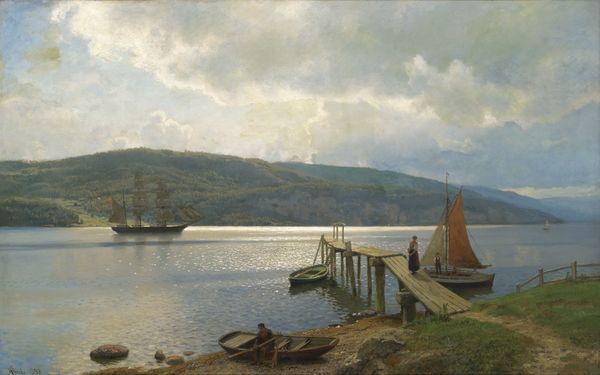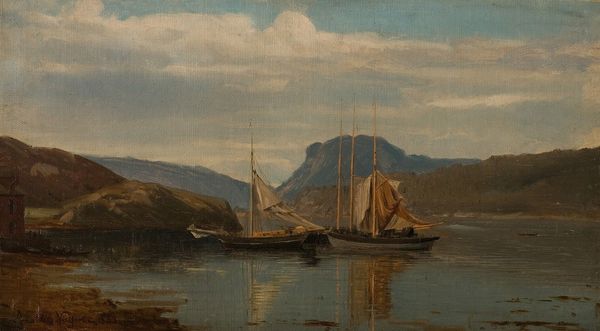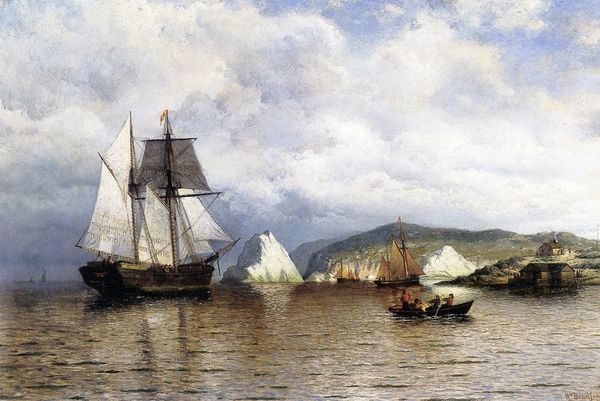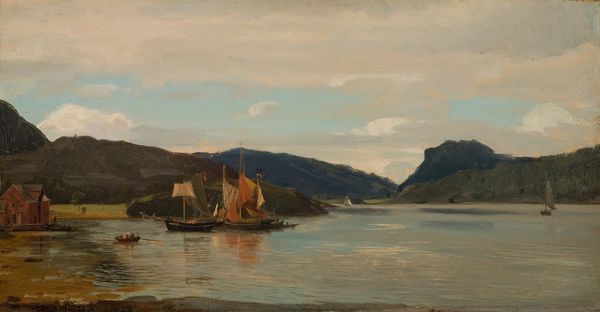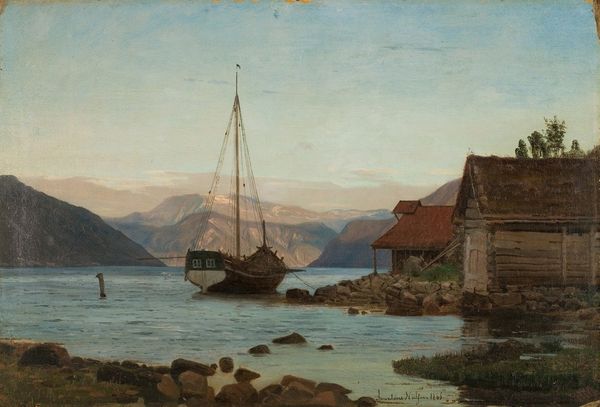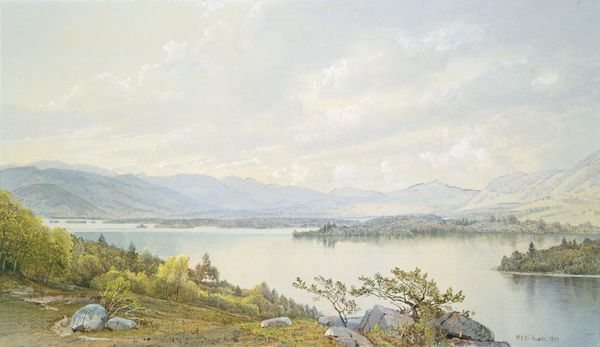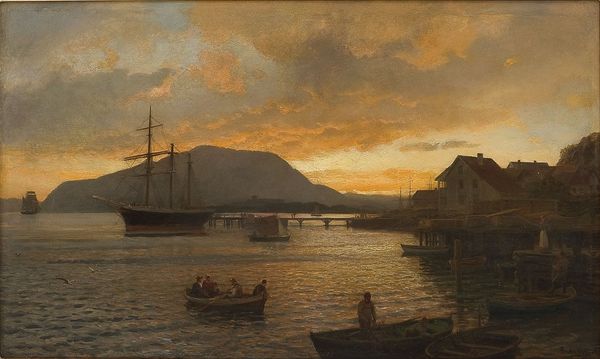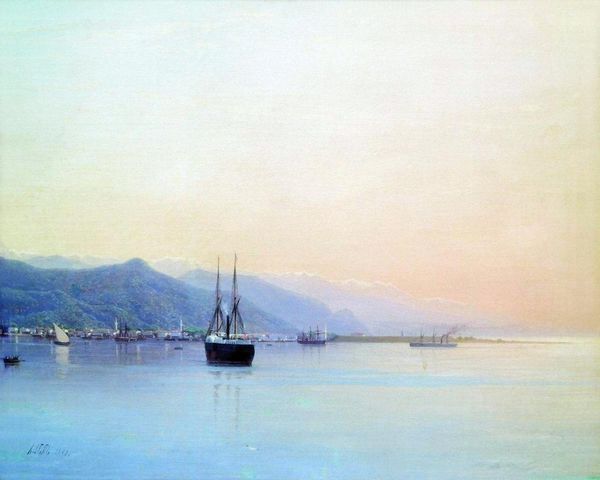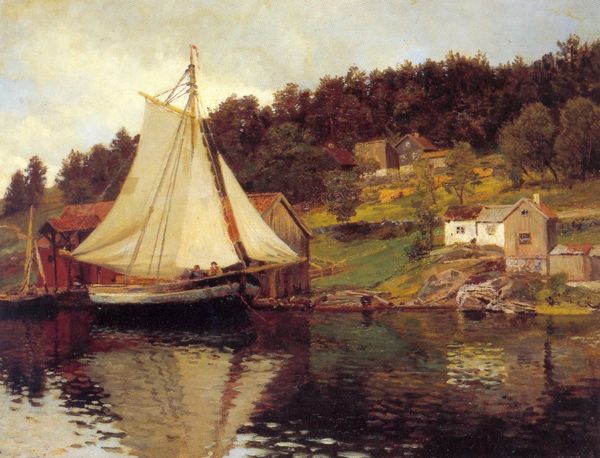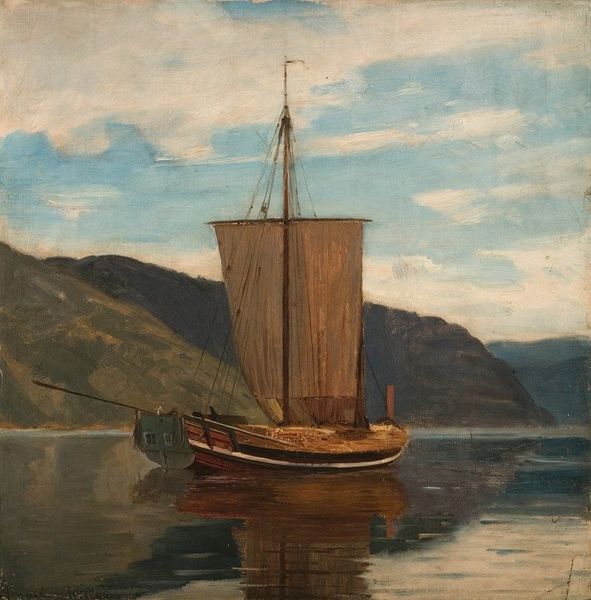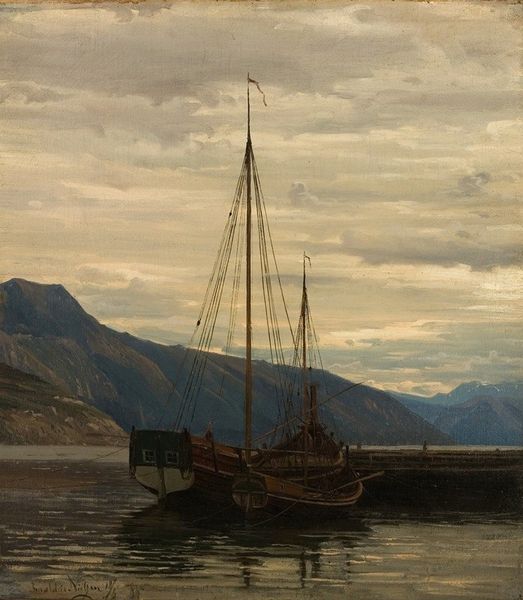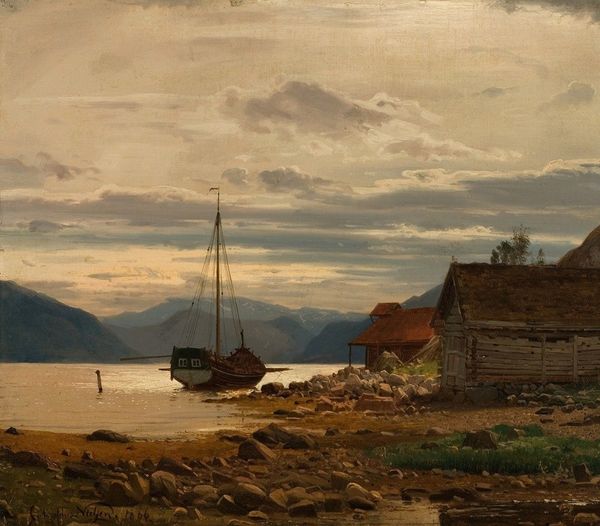
Copyright: Public domain
Curator: Right, let's spend some time with Hans Gude’s "Fra Kristianiafjorden," painted in 1896. I'm just lost in its atmospheric light. Editor: My first impression is one of incredible tranquility. It's almost meditative, with the soft ripples on the water and muted color palette. However, the presence of various boats hints at a historical narrative—who benefits from the fjord's trade routes? Curator: Absolutely. Gude's rendering of light reflecting on the fjord really evokes the serenity of a Scandinavian summer. The brushwork, even with the maritime scene, hints at that subtle shift into impressionism while maintaining a Romanticist sensibility. I imagine the scent of brine, perhaps a hint of woodsmoke... I can almost hear the seagulls. Editor: I agree it is evocative. The painting operates as both document and historical propaganda. The juxtaposition of the traditional sailboats against the modern steamship begs us to consider industrial progression, wealth accumulation and empire building. What does the industrialization of Oslo mean in this global, political landscape? Who owned those boats and how do they factor into patterns of global trade? Curator: It’s interesting how you frame it. Perhaps the painting then hints not just at serenity, but a tension – the traditional and the modern butting heads. I find Gude does something special with the cloud formations above... each stroke distinct, each cloud almost a character. Do you feel there's a narrative hinted at with those clouds? Editor: The clouds definitely carry an emotional weight. But for me, it’s less a specific narrative, and more about the human interventions that produce these landscapes – both literally and figuratively. And furthermore, the environmental impact... It pushes us to confront our place within a larger ecology, but perhaps too subtly, with the boats as aesthetic subjects rather than pollutants. Curator: Fair point. Perhaps he softens the harshness of that industrial transition a bit too much. Still, Gude captures a very specific feeling in that snapshot of Oslofjord—a sort of nostalgic glance, a pause before the future barrels through. It makes me want to just... linger there for a moment. Editor: I appreciate your take, and how you relate to Gude’s sensitivity in portraying the environment. Perhaps our combined perspectives today help bring into view those important nuances within the piece.
Comments
No comments
Be the first to comment and join the conversation on the ultimate creative platform.
